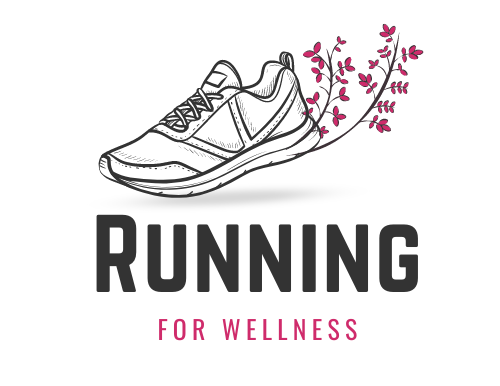Jogging is often celebrated for its role in weight management, cardiovascular health, and improved endurance. But beyond the visible physical changes, a growing body of research shows that jogging plays a profound role in improving mental health.
The concrete answer? Jogging enhances your mood, reduces symptoms of anxiety and depression, boosts self-esteem, and even helps protect your brain from age-related cognitive decline.
And this is not just a motivational saying; neurochemical, psychological, and clinical data back it. Whether you’re running a slow loop around the neighborhood or building endurance for a marathon, jogging could be one of the most powerful natural tools for emotional regulation and psychological resilience.
Table of Contents
ToggleHow Jogging Affects the Brain
Jogging stimulates the release of endorphins, neurochemicals associated with pleasure and pain relief. This “runner’s high” is not a myth. According to a 2008 study in Cerebral Cortex, sustained aerobic activity like jogging leads to an increase in endocannabinoids, a group of neurotransmitters that enhance mood and reduce anxiety.
But there’s more going on than just a short-term euphoric feeling. Jogging also boosts serotonin, dopamine, and norepinephrine, all critical to mental balance. Over time, regular jogging can rebalance these neurotransmitters in individuals suffering from depression or chronic stress.
| Neurochemical | Effect of Jogging |
| Endorphins | Elevate mood, reduce perception of pain |
| Serotonin | Improves mood, regulates anxiety |
| Dopamine | Increases motivation and pleasure |
| Norepinephrine | Enhances focus and helps combat fatigue and stress |
| Endocannabinoids | Contribute to relaxation and reduced anxiety |
Jogging vs. Depression and Anxiety

Numerous clinical trials have now confirmed that jogging can be as effective as medication in treating mild to moderate depression. In a widely cited 1999 Duke University study, patients with major depressive disorder were assigned to either antidepressants, exercise, or a combination of both. After 16 weeks, the group that jogged three times a week showed the same improvement as the group taking medication. Even more compelling, after ten months, the exercise group had the lowest relapse rate.
For anxiety, jogging offers a double benefit: it reduces cortisol levels (your body’s main stress hormone) while also helping you manage symptoms like muscle tension, agitation, and racing thoughts.
| Mental Health Outcome | Impact of Jogging |
| Depression | Comparable to antidepressants; reduces risk of relapse |
| Anxiety | Decreases symptoms by reducing muscle tension and promoting calmness |
| Chronic Stress | Regulates cortisol levels and enhances resilience |
| Self-Esteem | Boosts confidence through goal-setting and physical capability |
Jogging and Cognitive Function
Jogging also has a positive impact on your brain’s structure and function. A 2016 study in Psychiatry Research: Neuroimaging showed that aerobic exercise leads to hippocampal volume growth, the region of the brain responsible for memory and learning. In practical terms, this means better memory retention, sharper focus, and slower cognitive decline.
This is particularly important as we age. Regular jogging has been shown to lower the risk of dementia and Alzheimer’s disease.
The Role of Jogging in Recovery and Rehab
The mental benefits of jogging are so pronounced that they’ve been incorporated into rehab programs for addiction, PTSD, and trauma recovery. Rehabilitation centers around the world are now using structured jogging routines as a non-pharmacological support to help patients manage withdrawal symptoms, regulate their mood, and re-establish a daily routine.
In addiction recovery, jogging offers a reliable dopamine boost without the destructive cycle of substance use. In PTSD treatment, it serves as a grounding technique, helping survivors stay present and manage flashbacks. The consistency and discipline of jogging also promote structure, something crucial for people rebuilding their lives after mental or physical trauma.
| Rehab Context | Mental Health Benefits of Jogging |
| Substance Use Recovery | Natural dopamine release, improved mood regulation |
| PTSD Programs | Reduced anxiety, improved sleep, and a sense of bodily control |
| General Mental Health Rehab | Builds daily rhythm, enhances self-efficacy |
Jogging as a Preventive Tool for Mental Decline
Even if you’re not dealing with a diagnosable condition, jogging plays a major preventive role in keeping your mind sharp and balanced. It improves sleep quality, enhances problem-solving, and supports emotional regulation. Mental health experts now encourage jogging not just as a treatment but as preventive mental hygiene, like brushing your teeth, but for your brain.
According to the Harvard T.H. Chan School of Public Health, just 15 minutes of jogging a day reduces the risk of major depression by 26%. And the benefits appear to be cumulative: the longer and more consistently you jog, the more robust the mental gains.
Social and Emotional Benefits

Jogging doesn’t just change what’s happening inside your brain; it also shifts how you interact with the world. Whether you’re jogging solo in a park or participating in community runs, the practice nurtures discipline, connection, and self-mastery.
Long-distance joggers often report a meditative state that helps process emotions, generate creative ideas, or achieve mental clarity.
Making It Work for You
You don’t need to run a marathon to reap the mental rewards of jogging. A consistent, moderate approach is more effective than intensity or distance. Aim for 3–4 sessions a week, between 20–45 minutes, and focus on your breathing, surroundings, and physical sensations rather than performance metrics. This mindful approach amplifies the stress-reducing and mood-boosting effects.
And if you’re undergoing or coming out of a rehab program, jogging can become part of a holistic mental health strategy that keeps you moving forward, physically, mentally, and emotionally.
Conclusion
The scientific evidence is clear: jogging is not only a fitness tool but a powerful therapeutic intervention. From balancing neurotransmitters to reversing depressive symptoms, jogging transforms your mind while strengthening your body.
Whether you’re looking to maintain mental wellness, recover from a tough period, or rebuild after a rehab program, a pair of running shoes might be one of your most powerful tools. It’s affordable, accessible, and profoundly effective, an antidepressant you don’t need a prescription for.
Related Posts:
- How Long Does It Take to Train for a Half Marathon?
- How Can You Start a Career as a Running Coach?
- Top 400 Hilarious Gym Quotes to Keep You Motivated
- How Far Is a Half Marathon? Everything You Need to Know
- 6 Best Running Playlists Music for Every Pace and Mood
- 25 Simple Running Motivation Tips To Get You Moving







